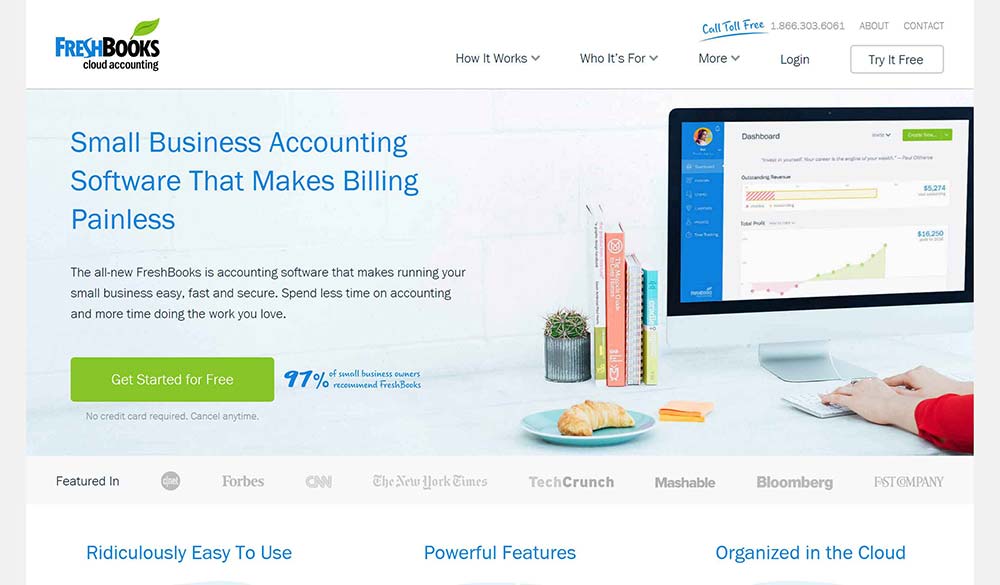As a new small business owner, one of the first tools you’ll invest in is a good accounting software. Sending professional invoices, tracking your expenses and processing payments is one of the core fundamentals of business.
I mean, as fun as it is to run your own business, you’re in this for the money, right?
Accounting software has come a long way. So much so that it doesn’t even make sense to call it software anymore.
Everything is done online now. The days of sliding a disc into the ol’ CD-ROM drive and installing the latest QuickBooks version onto your hard drive are long gone.
(Ugh, I remember those days. *shivers*)

FreshBooks is no different. Their accounting platform is hosted entirely online, and is accessible via the CLOUD. No CDs, no downloads, no updates to push. Just simply login.
It’s the invoicing platform I’ve used from the beginning of my web design business. Allow me to tell you why.
*NOTE: All screencaps of FreshBooks in action are of a demo account I created. You didn’t actually think I’d spill my financials for all of you to see, did you?*
FreshBooks Features
Dashboard
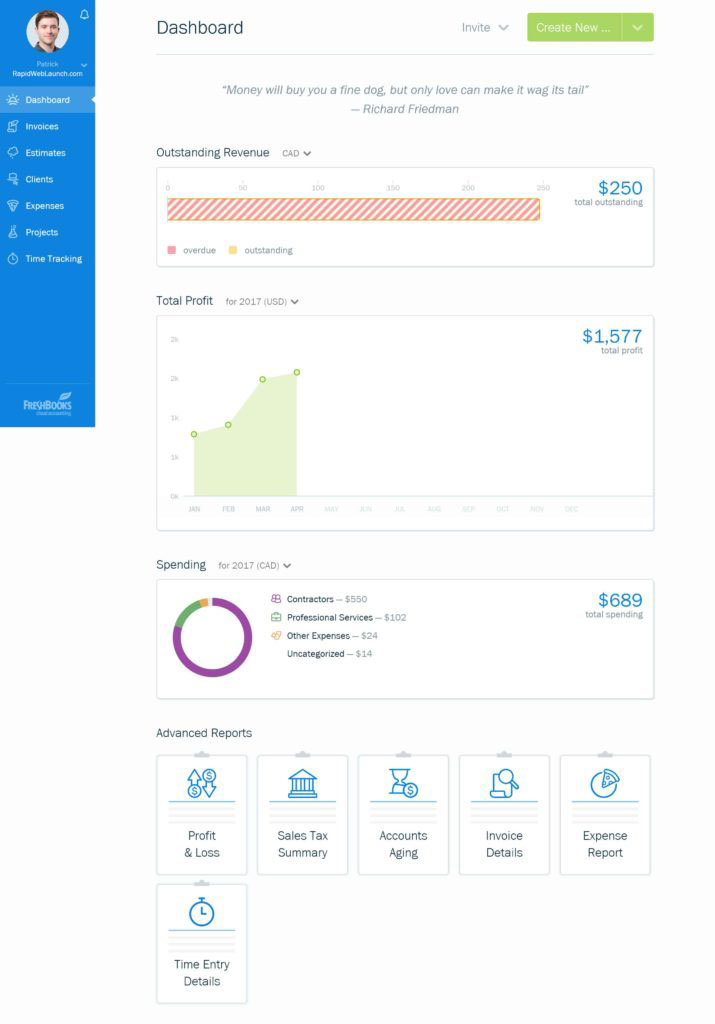
Nobody wants to spend their entire day creating invoices and punching in numbers. The FreshBooks Dashboard makes sure you never have to do that.
It offers a quick (and beautiful) overview of your business’ financial situation as soon as you login. All on one page, you can find out:
- How much money you’re owed
- Which invoices are outstanding and overdue
- How much money you’ve made (or lost) over the past few weeks, months and even years
- Where your business spends most of its money
- Access to powerful, automated reports that give you even deeper insight (more on that later)
Again, this is all done on one page. It’s easy to navigate, and you’ll often find you never need to go to another page to get the info you’re looking for.
Invoicing
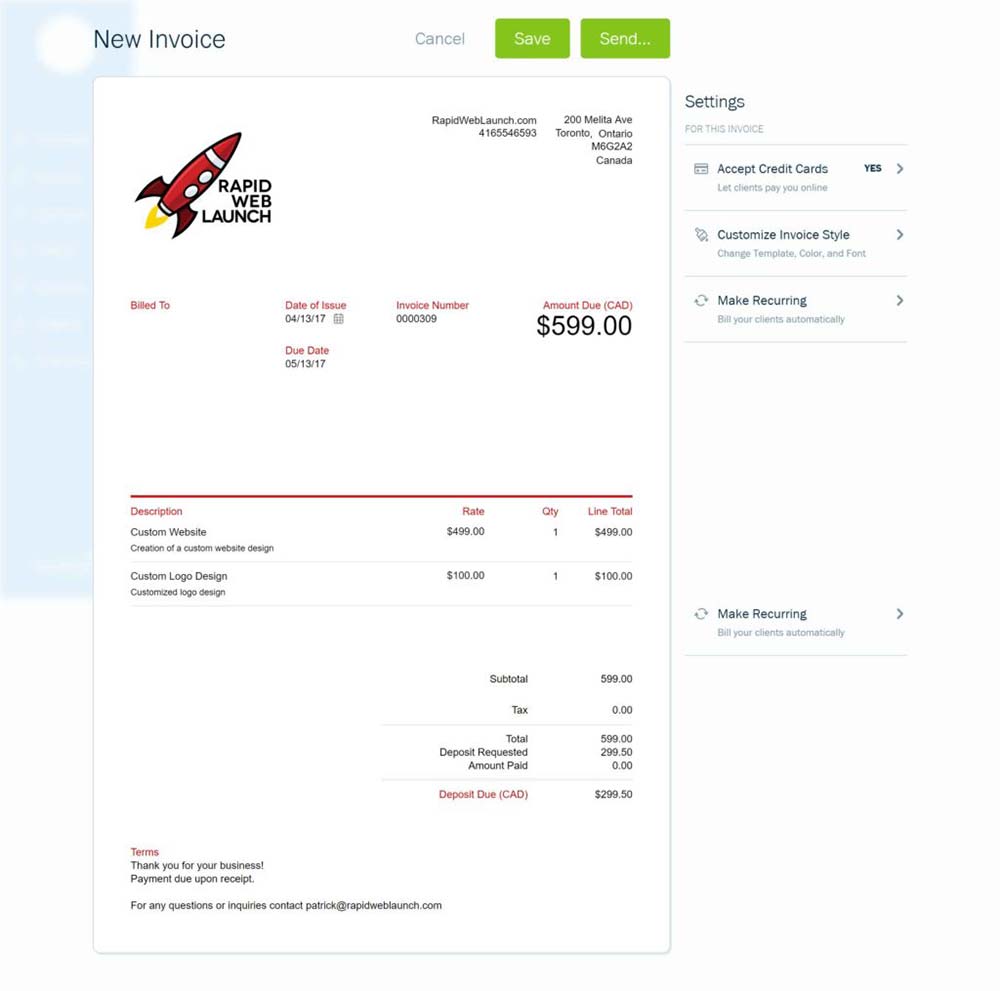
A good accounting platform is only as good as its invoicing capabilities. Invoicing is where FreshBooks got its start, and what attracted the nearly 10 million customers they now boast.
FreshBooks changed the invoicing game. In a time when most people were still clunking their way through overpriced QuickBooks CDs, FreshBooks introduced a ground-breaking, cloud-based invoicing platform. All at an affordable price.
With the newly redesigned FreshBooks, they make it clear that they don’t plan on slowing down any time soon. In fact, FreshBooks may have even managed to make invoicing fun.
Here are all of the features you can expect to get from FreshBooks’ invoicing platform:
- Full customizing of your invoices
- Getting paid with deposits
- Getting paid with credit cards
- Customizing due dates
- Create quick discounts
- Create and send estimates to prospects
- Online payments processing
- Charge late payment fees
- Create recurring invoices and get paid automatically
- Multiple currencies in multiple languages
- White-label client portals
- Send late payment reminders to your clients
- Charge sales taxes
- Offer client credit
- Track offline payments
- Send emails or snail mail
- Automated tax circulations
- Invoice previews
- Know when your customer has seen the invoice
- Complete invoicing automation (extremely useful for subscription based products)
My favorite features are the ones that allow me to automate my business. I can automatically send invoices, charge my client’s credit card, and send them a receipt.
This is incredibly useful when you have subscription-based products, as I do.
Payment processing
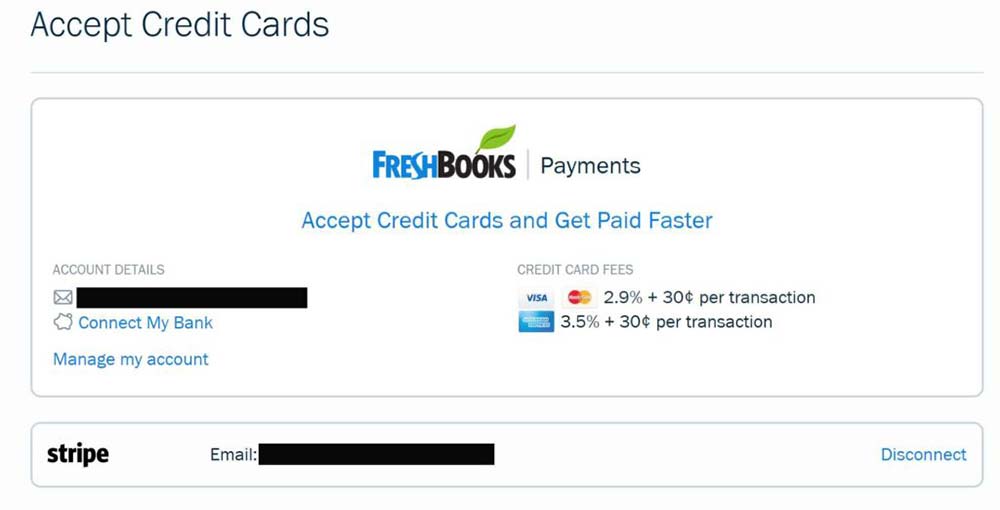
When it comes to receiving payments from customers, FreshBooks has several options. You can record payments to invoices via traditional methods such as:
- Check
- Bank transfer
- Cash
- Debit
But these days, every business wants to receive payments via credit card. If you’re selling products online, it’s absolutely essential.
FreshBooks Payments
The new FreshBooks now includes it’s own built-in credit card payment processor. FreshBooks integrated with WePay to handle the transactions. The fees they charge are competitive with the industry standards: 2.9% + $0.30 per transaction for Visa and MasterCard, and 3.5% + $0.30 for American Express.
You get paid via direct deposit to your bank account in 2-5 business days.
Stripe
The fees they charge are the same as Freshbooks Payments. (Freshbooks Payments came after Stripe, so naturally they didn’t want to charge more)
Stripe also pays you via direct deposit in 2-5 business days.
Freshbooks Payments vs Stripe (the power of automation)
But Stripe does a better job at managing client subscriptions and automatically charging their credit card each month. From what I understand, FreshBooks Payments doesn’t allow you to manually enter a clients credit card and billing info yourself. Your customer has to do it themselves through their online portal.
Personally, I like to be in control. Stripe FTW.
No PayPal?
This is a big oversight on FreshBooks’ part.
The new FreshBooks removed the option to receive customer payments via PayPal, which I’m not impressed about. While I’m not a fan of PayPal by any means, it is still one of the most popular online payment processors in the world.
Clearly, FreshBooks wants more people to use their own payment processor, but removing options for your customers is not the way to do it.
I hope they realize their error, and bring back PayPal integration in the future.
In the meantime, you can still accept payments directly through PayPal, then manually record the payment in FreshBooks. It’s not as sexy, but it works.
Expense tracking
![]()
You have to spend money to make money. FreshBooks makes it super easy to keep track of your business expenses by automatically importing your purchases from your bank accounts and credit cards.
Just connect your financial accounts to FreshBooks, and watch the magic happen.
FreshBooks says they support accounts from over 14,000 financial institutions, so there’s a very good chance that yours is included.
Pro Tip: If you haven’t already, open a bank account and credit card to be used only for your business. If you mix in business expenses with your personal ones on the same account, FreshBooks won’t be able to tell the difference, and will import everything. Trust me, having separate accounts will save you so much time come tax season.
Project management
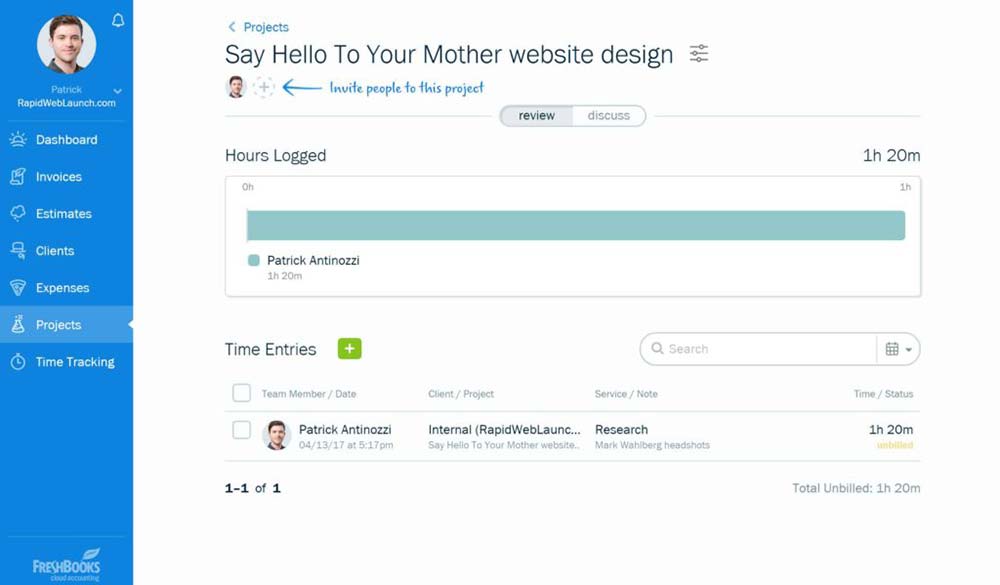
I tend to work solo, only occasionally hiring out contractors. But if you have a team to keep manage of and collaborate with, FreshBooks’ project management features may be a good fit for you.
It allows you to:
- Collaborate with clients, contractors and employees
- Share images and files
- Set project due dates
- Chat with team members
- Keep client information all in one place (files, documents, artwork, financials, everything…)
This is all included in your subscription. There’s no additional cost. Perhaps you could save yourself the $10/month you spend with Dropbox and switch over to FreshBooks…
Time tracking
![]()
Along with project management, FreshBooks helps you manage your (and your team’s) time.
Depending on your line of work, you may be billing your clients by the hour. As such, your clients will want to have a detailed account of exactly how you are spending your time. Time = money, after all.
What’s included in FreshBooks’ time management tool?
- Timer (duh)
- Team timesheets
- Clear breakdowns of each day
- Tracking against clients and projects
- Automated billing for tracked hour per project
- Project Managers
- Track unbilled time
Track all of your time within FreshBooks, then convert that time to an invoice with a simple click of the button. Or you could simply use it as your personal productivity tracker.
Accounting reports and taxes
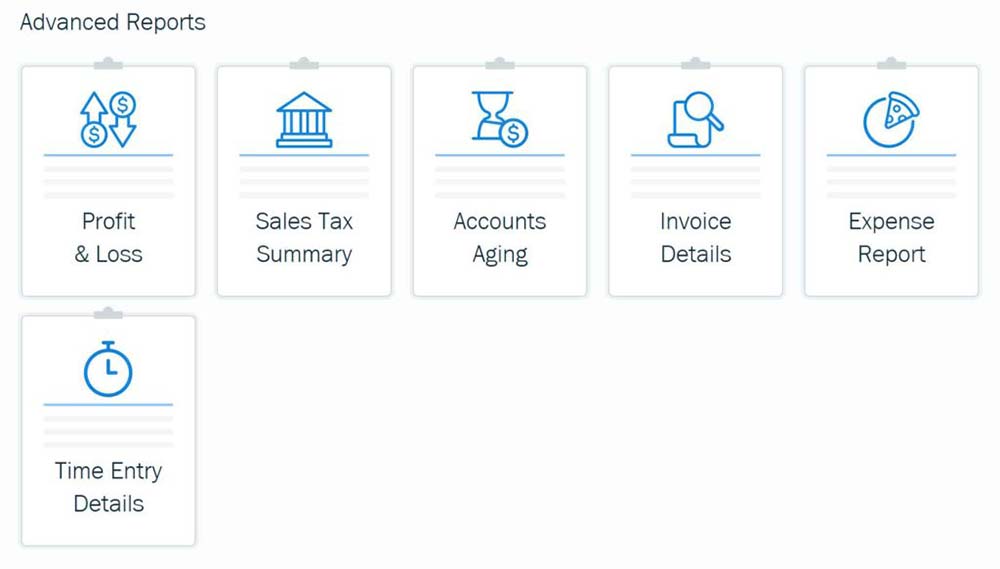
This is one of my favorite features of FreshBooks. With a couple of clicks, FreshBooks will generate powerful reports that give you deep insight into your business.
Here’s just a sampling of the types of reports you get:
- Profit and loss by:
- Quarter
- Year
- Sales tax summaries
- Accounts aging
- Invoice details for any and all invoices ever
- Expense reports by:
- Category
- Vendor
- Client
- Author (the person buying the stuff)
- Time entry details by:
- More varieties than you can count
Your data is a gold mine. It’s more important than ever to treat it like gold, and go digging for it. FreshBooks is the tool that will help you do that.
Apps and integrations
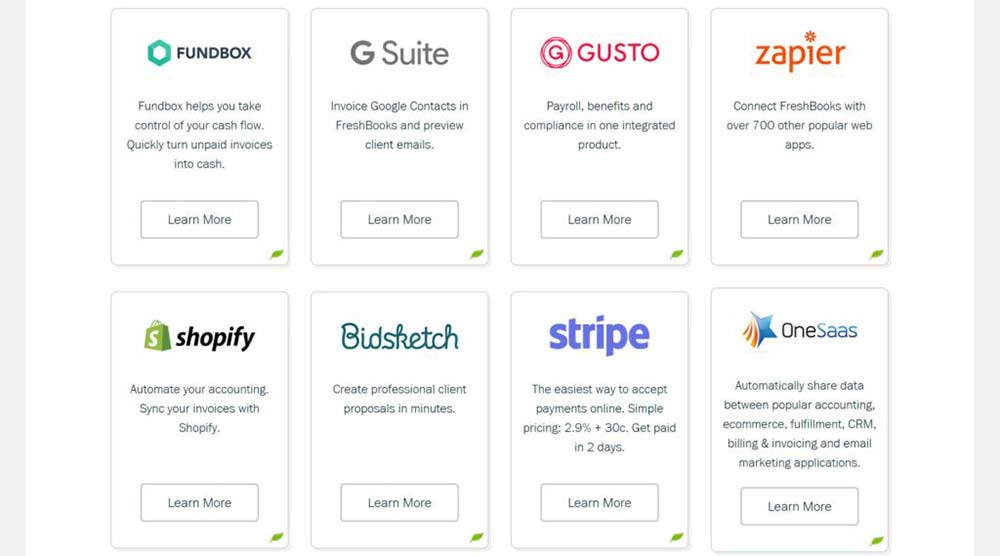
Our modern world is drowning in apps. The best ones are the apps that are built to communicate and collaborate with others. Thankfully, FreshBooks knows this, and has built their platform to play well with others.
From Gmail and Shopify, to Zapier and Capsule, FreshBooks integrates with dozens of other platforms. CRM’s, productivity managers, ecommerce platforms, you name it.
Mobile app
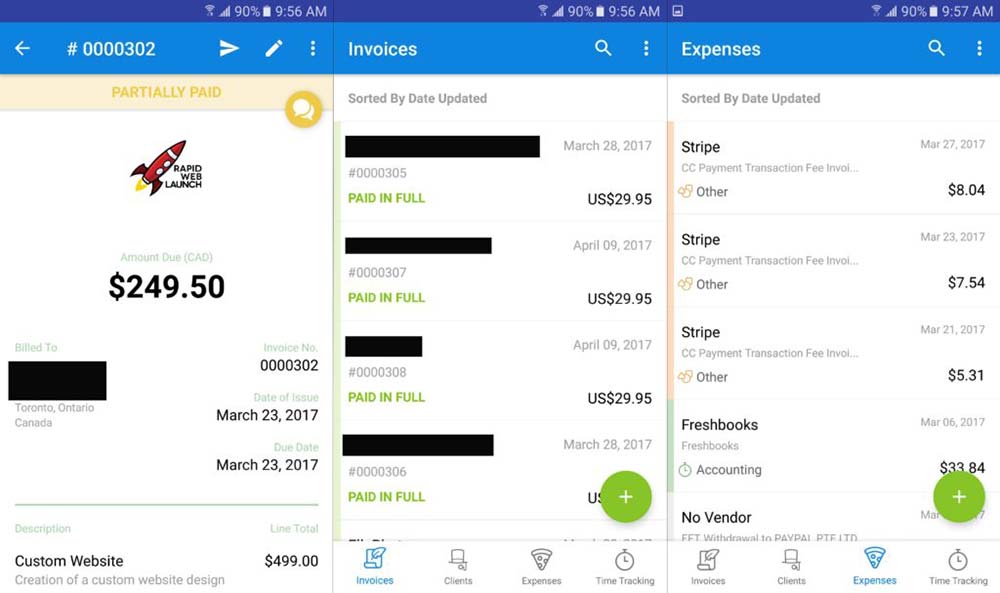
With the launch of the completely new FreshBooks came the release of an all-new mobile app as well.
The mobile app has been vastly improved. Nearly anything you can do on the desktop version can also be done in the mobile app. Create and send invoices, record payments, track and import expenses, manage projects and track your time.
From what I can tell, the only thing you can’t use is the Reporting feature. Considering how little you’d actually need to generate reports on the go, this isn’t a big setback.
The app is available for both iOS and Android. No word yet on a Windows version but, honestly, who cares?
FreshBooks Pricing
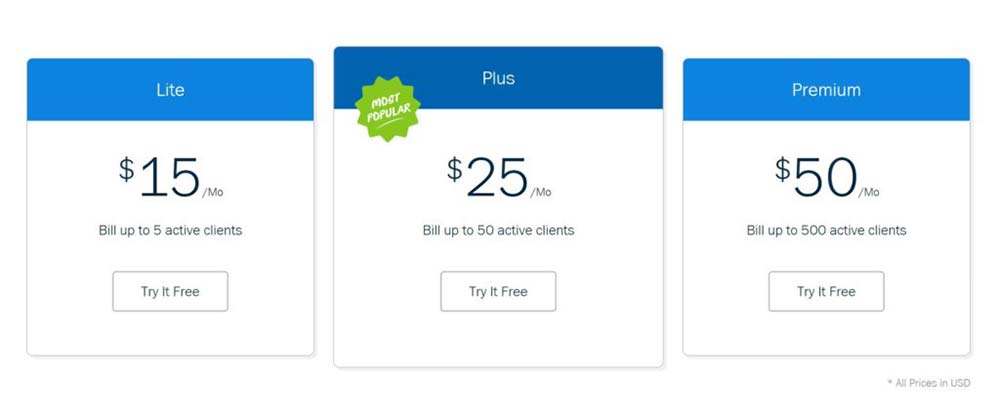
Freshbooks used to have a free version that would only allow you to bill about 5 clients, but they seem to have gotten rid of it with the launch of the new FreshBooks. Now, they offer a full 30-day free trial of the Plus version.
Honestly, I never used the free version. I went straight to the paid model. It’s well worth it.
FreshBooks has three pricing plans to choose from. The difference in plans simply comes down to how many clients you have:
- FreshBooks Lite: $15/month (Bill up to 5 clients)
- FreshBooks Plus: $25/month (Bill up to 50 clients)
- FreshBooks Premium: $50/month (Bill up to 500 clients)
This pricing is on par with the rest of the industry. Their largest competitor, QuickBooks, charges $27/month for their “Plus” plan. Personally I think it’s an inferior product.
Support
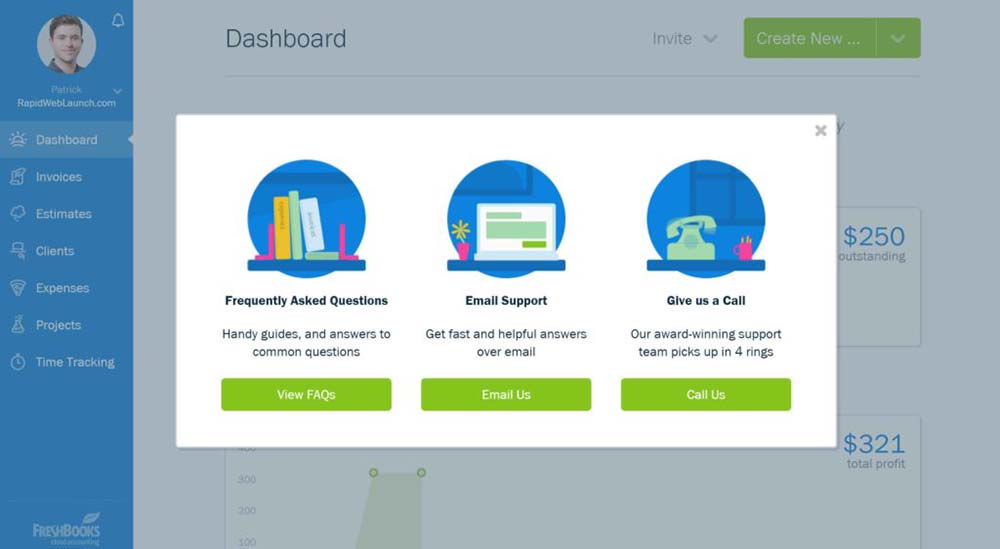
Sometimes you’re gonna get stuck. And when you do, you’re going to want help. Fast.
These days, most companies have a variety of solutions that break down into two categories:
- Self-serve (via FAQ’s, Knowledgebases, and Tutorials)
- Communication (via phone, email, text, and chat)
FreshBooks has options from both categories.
Self-serve
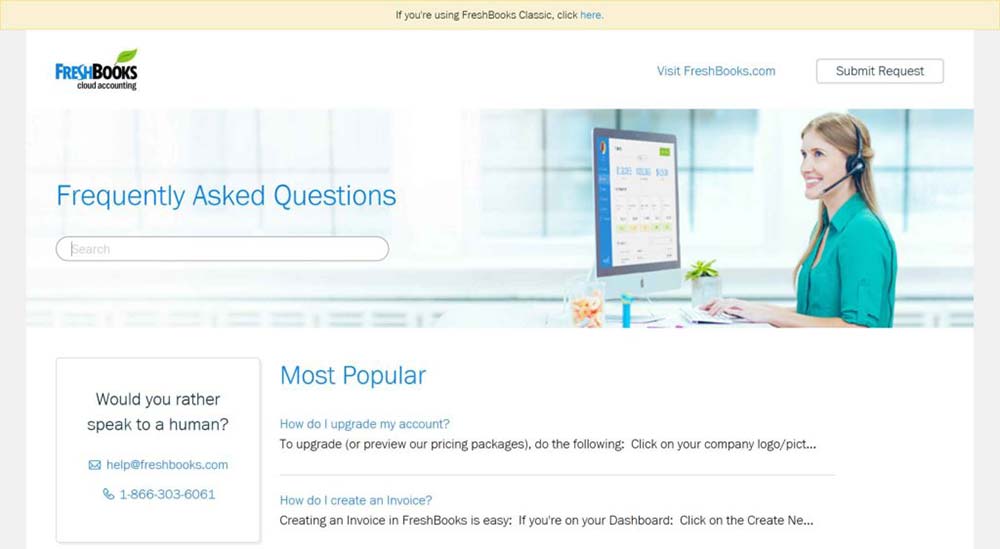
Most of your questions can be answered through a simple search in FreshBooks’ database of FAQ’s. It’s easy to navigate, and the search feature is very thorough.
Communication
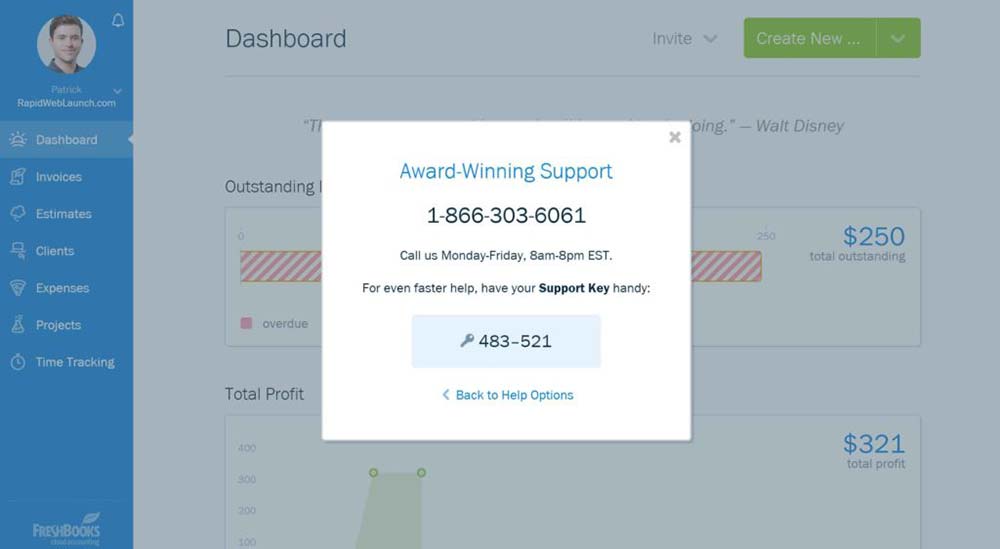
Ah yes, communication. Something we all seemed to do so much better before we had all these… communication tools.
If you can’t seem to get any answers from the self-help section, you can contact FreshBooks via phone or email.
And FreshBooks makes some pretty bold claims with regards to their phone support. They say they will always answer the phone within 4 rings.
In case you’re wondering, yes, I tried it out.
They answered in…
5 rings.
THAT’S IT SHUT IT DOWN EVERYONE MOVE TO QUICKBOOKS.
As far I’m concerned, I’ll take 5 rings from any company any day. I can’t actually think of another company that has answered with a human being that quickly. Like, ever.
Conclusion
I’ve been using FreshBooks since the very beginning of my business. While I haven’t used a lot of other invoicing platforms, (I have used QuickBooks, didn’t like it) I also haven’t felt the need to. FreshBooks meets my needs and then some.
The removal of PayPal as a payment option for your clients is a fairly annoying setback, but hardly a deal breaker.
If you are in need of a new invoicing and accounting platform for your business, I highly recommend giving Freshbooks a try.
FAQ’s
How much does FreshBooks cost per month?
FreshBooks has 3 tiers of subscriptions. $15/month for FreshBooks Lite (up to 5 clients), $25/month for FreshBooks Plus (up to 50 clients), and $50/month for FreshBooks Premium (up to 500 clients).
Is there a free version of FreshBooks?
Nope, not anymore. FreshBooks does offer a 30 day free trial, but you will need to pay monthly after that.
Does FreshBooks accept PayPal payments?
No. They used to, but not anymore. All payments must be processed through either Stripe or FreshBooks Payments.
Is FreshBooks better than QuickBooks?
That’s like comparing apples to oranges. QuickBooks is a more complete accounting system. While FreshBooks is more focused on invoicing, payment processing and basic bookkeeping. Choosing one comes down to what your business’ needs are.
How do I switch back to FreshBooks classic?
You can’t, FreshBooks classic is dead. All hail the new FreshBooks!
Does FreshBooks have a balance sheet?
Yes, FreshBooks does have a balance sheet feature, but is mostly just a template. For more advanced accounting features, you may want consider something like QuickBooks instead.
Does FreshBooks accept ACH payments?
FreshBooks does not accept ACH payments. All payments must be made via credit card.

